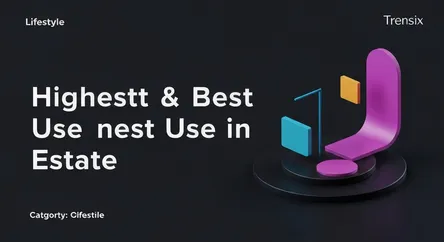Lifestyle
Highest & Best Use in Real Estate

Discover 'Highest and Best Use,' the core concept determining a property's maximum value. Learn why it matters for owners, buyers, and investors alike.
What is it?
Highest and Best Use is a fundamental concept in real estate appraisal. It refers to the most reasonably probable and legal use of a property that is physically possible, financially feasible, and results in the highest value. In short, it’s about finding the most profitable, permissible way to use a piece of land or a building. Appraisers analyze four key criteria to determine this: what is legally allowed (zoning), physically possible (size/shape of the lot), financially feasible (will it generate a positive return?), and maximally productive (which use creates the most value?).
Why is it trending?
This principle is gaining traction in today's dynamic real estate market. With urban areas undergoing redevelopment and zoning laws constantly evolving, the potential use of a property can shift dramatically. Investors and developers are laser-focused on maximizing their return on investment (ROI), making the analysis of highest and best use more critical than ever. The scarcity of land in desirable locations also pushes property owners to re-evaluate if their current use is truly the most valuable one, driving interest in adaptive reuse and redevelopment projects.
How does it affect people?
For homeowners, understanding this concept can reveal untapped equity. A single-family home might be on land zoned for a duplex, making it far more valuable to a developer. For buyers and investors, it’s a vital due diligence step to avoid overpaying and to identify properties with hidden potential. On a community level, this principle influences urban planning and development. It dictates what gets built in neighborhoods, impacting everything from housing availability and local business growth to property taxes and the overall character of a town or city.